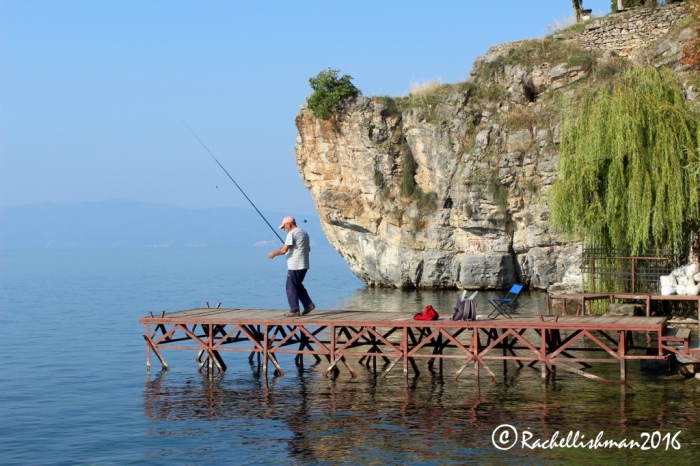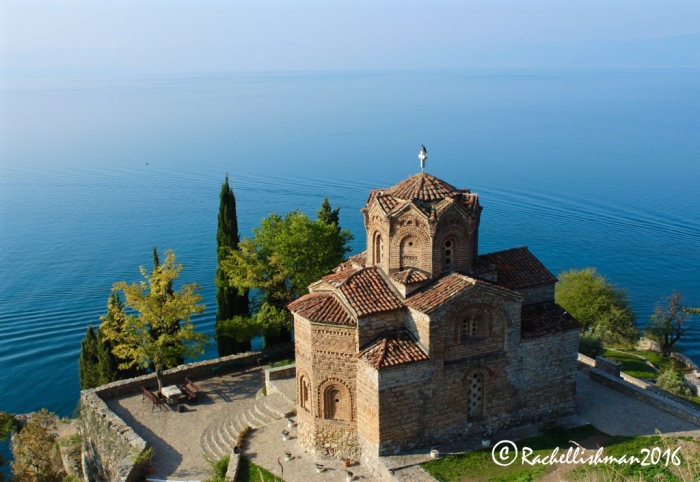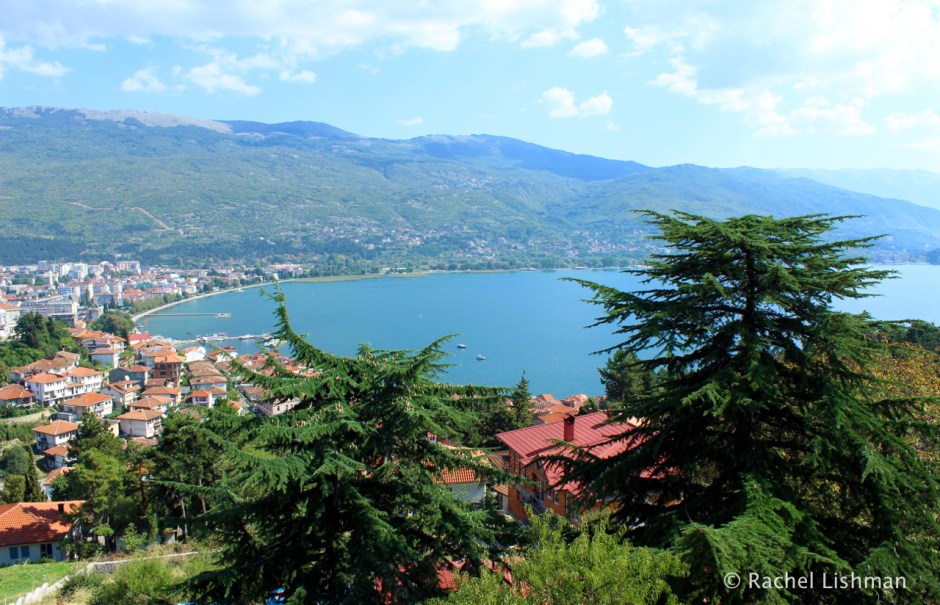As I looked down from Samuel’s Fortress, I marvelled that its 11th century guards would have taken in a similar view. Misty mountainous slopes, seasonally snow-capped, plunge towards slithers of shoreline that border the city of Ohrid’s ancient lake.
Estimated to be over five million years old, Lake Ohrid more closely resembles a vast sea across its shimmering horizon. Few lakes in the world share its age, isolation and numerous endemic species; Lake Baikal in Russia is one. So, by the time humans first settled the area in ancient Greek times, the lake already ebbed and flowed as pleasantly silent as it does today: Beautiful even on a stormy day, when clouds turn its turquoise waters into an opaque slate grey.
However for Ohrid’s medieval soldiers, daily life was very different. Long a hotchpotch of warring civilisations, Ohrid has borne witness to countless battles and bloodshed over the centuries.
In 1050, the guardians of its walls were citizens of the Bulgarian Empire: subjects of Tsar Samuel for whom the fortress was built. By this time, Ohrid had already been home to the Greeks, Romans and Slavs, and in the Bulgarians’ wake, it was captured by the Ottoman Empire to the east. It would also become an important centre for religion and trade, as one of the cities at the end of the ancient Silk Road.
This lasting legacy from the city’s tumultuous past, and the diverse cultural hub it has created, is protected today by UNESCO. In Fact, the combination of Ohrid’s human history and its ancient lake species have propelled it into a shortlist of only 28 UNESCO sites that are listed for both culture and nature. What’s simply denoted by a half green, half yellow spot on UNESCO’s map, offered me a week in an unknown Europe that left a big impression.
From Samuel’s Fortress I could easily see the cobbled medieval streets that still lead to the harbour, balconies bursting with drying peppers and a plethora of Yugo-branded cars (an ode to Macedonia’s recent past and a stark reminder of its former identity as part of the Republic of Yugoslavia).
Macedonia only officially gained independence in the early 90s. In 2016, my view also evidenced growing tourism in the region. Boats ferried visitors to local beaches, while many of the 11th century wattle and daub structures had been sensitively renovated into boutique hotels. To my right I could make out my own guesthouse: Maria’s Hostel Saraj; perched on the slopes in the shadow of Samuel’s Fortress and only a stone’s throw from the famous frescoes of St Sophia’s church.



My favourite time of day on Maria’s fruit-laden terrace was dusk, when the lamps of the promenade below began to twinkle as the sky turned purple, and a giant crucifix came to life high on a nearby mountain. A reminder perhaps, I thought, for the important part that religion has played in the formation of Ohrid. Through waves of old and new immigration, Orthodox Christianity and Islam have long been the predominant faiths. At one time, the city had enough churches for every day of the year. Today, the tower of Ohrid’s main mosque also frames the modern town square.
When relaxing with a glass of local wine on Maria’s balcony, I found it difficult to remember that Ohrid life hadn’t always been as romantic as my hazy pink view.
Twentieth century dictatorships and wars for independence have kept Macedonia’s GDP low by European standards, and although on the list to join the EU since 2005, the country still waits. An ongoing scrap with Greece over the use of its name and contemporary challenges to provide policy and infrastructure for the wave of refugees accessing its borders in the south has resulted in Ohrid’s tourism industry, unlike other Baltic beauty spots, still being in its infancy.
A short while after my visit, Ohrid was listed on the Lonely Planet’s top cities to visit in 2017. However for now, it remains in an unusual limbo where meals at lakeside restaurants are cheap, there are no queues to visit its plethora of ancient ruins, and local fisherman still concentrate on the daily catch meters from sunbathing holidaymakers.
I have, like UNESCO, realised that Ohrid is special; it may just take the rest of the world a little while to catch up.

What an interesting history and beautifully written.
LikeLiked by 1 person
Thanks Miriam. It’s one of those places where you can’t help but think about the past – as it’s still all around you!
LikeLiked by 1 person
Rachel, your last photo is gorgeous. Ohrid sounds like a fascinating place. Thank you for telling us about it. I hope it doesn’t become overrun with tourists. Is this a new look for your blog? It looks great.
LikeLike
Hi There and thank you! I can’t recommend Ohrid highly enough 🙂 Yep I decided a few months ago to give the front page a bit of a makeover, so I’m glad you like it. I’m no graphic designer, but I thought perhaps the black and white would leave the post photos to stand out more!
LikeLiked by 1 person
I’ve been thinking of changing my colours too but I’m not quite game to try. I should pluck up the courage to play with my theme.
LikeLike
Thank you for the detailed history on the area. The lack of crowds makes it sound very appealing. Brick
LikeLike
I enjoyed reading your post, and your writing style really pulled me in! Besides, all those photos are amazing!
What a beautiful blog! I’m so glad to discover your blog.You got a new follower here 🙂
LikeLike
Thanks very much for stopping by and following The Long Way Home – I’m glad you like it! I’m writing loads of posts at the moment so there’ll hopefully be more travel inspiration coming up over the next few months! Good to have you along for the journey 🙂
LikeLike